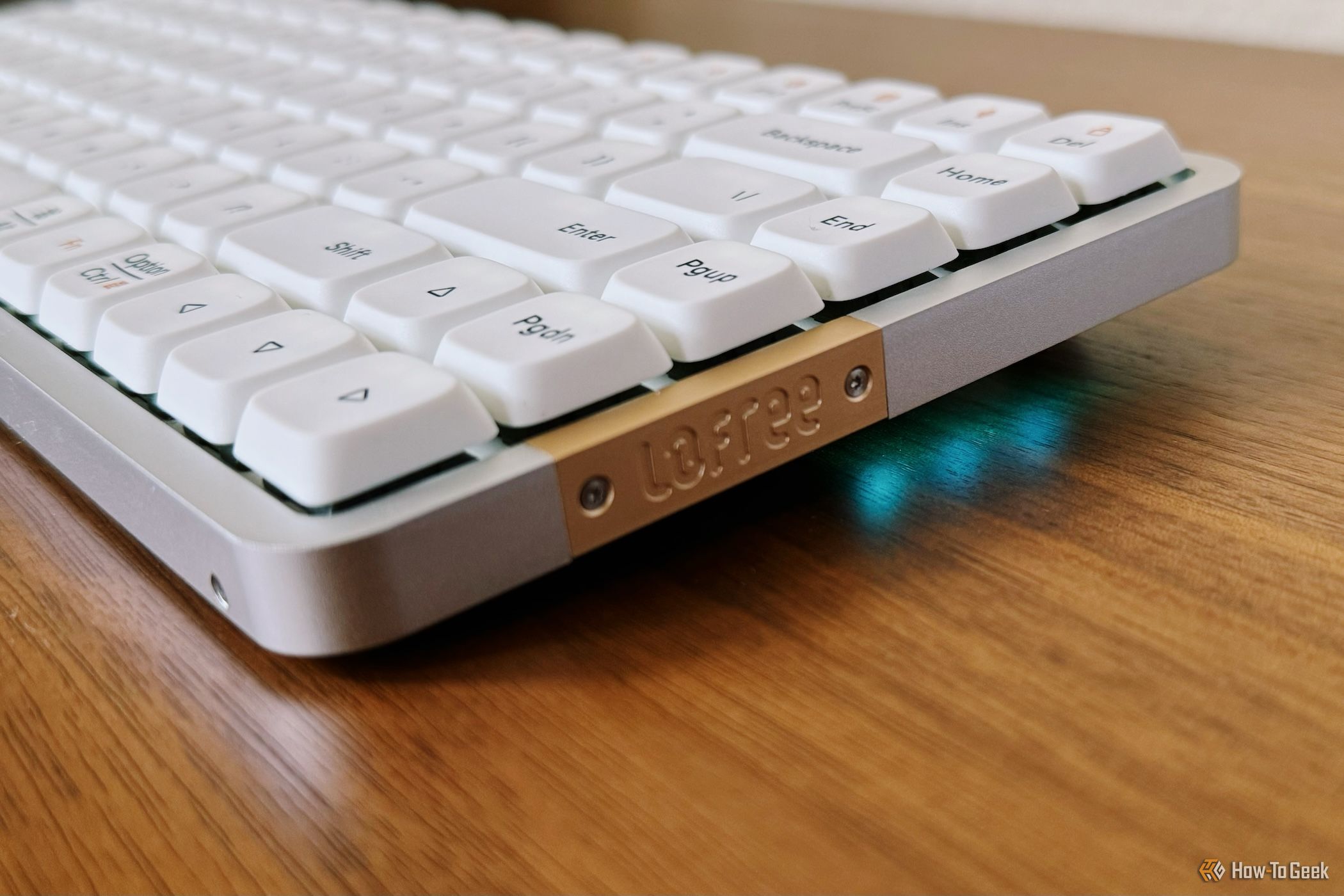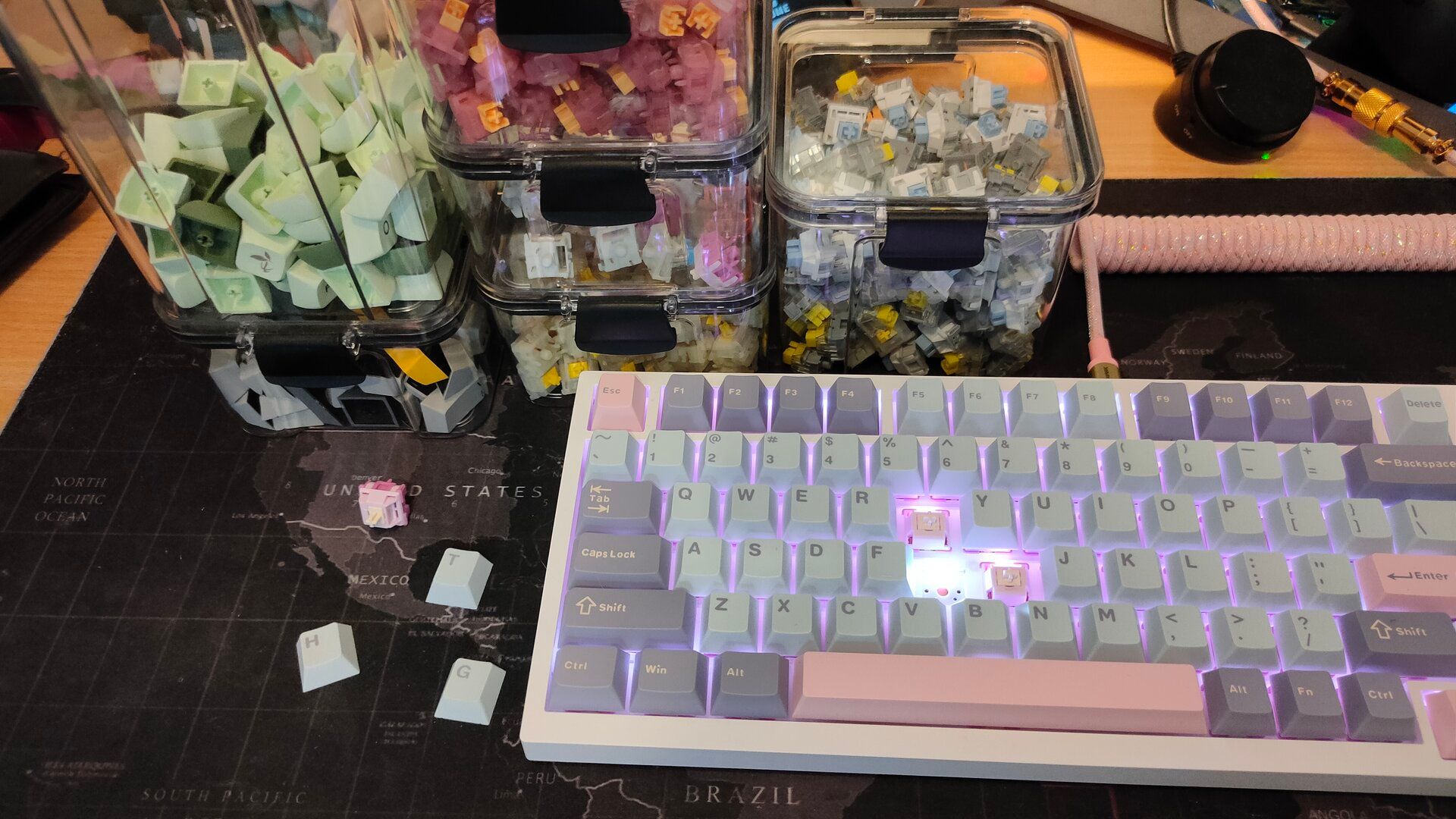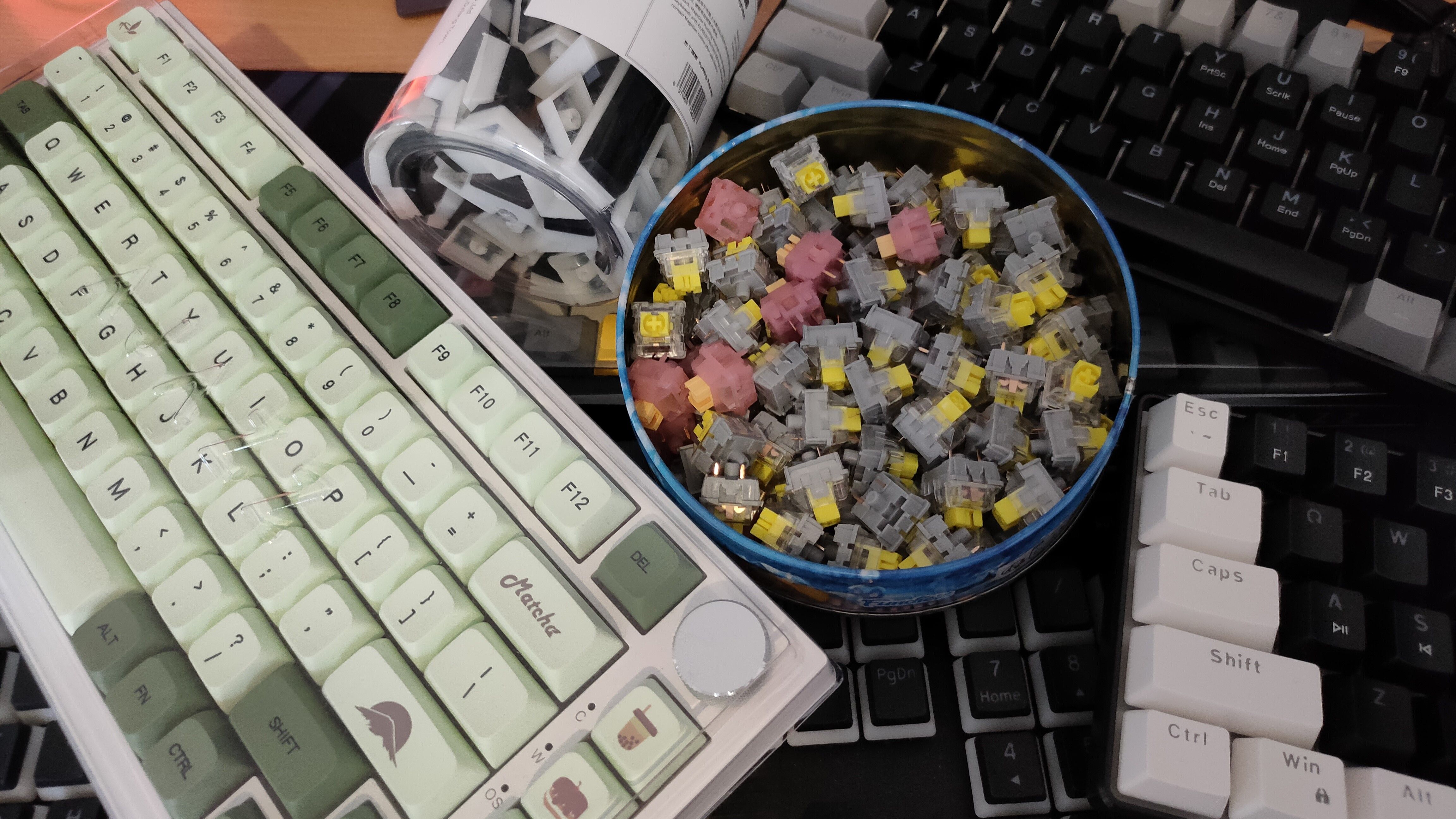Summary
- Custom mechanical keyboards are expensive due to the use of premium materials and pricey components like switches and keycaps.
- Barebones kits offer a cheaper alternative to “true” custom builds, but they’re still expensive.
- Building a semi-custom keyboard using a pre-built model with hot-swappable switches is the most affordable option.
If you’ve fallen down the custom mechanical keyboard rabbit hole, you’ve likely seen Reddit posts or videos of $500+ builds. Sometimes, the base kit alone costs more than a high-end prebuilt. So, what makes these keyboards so expensive, and are they really worth it?
What Is a Custom Keyboard?
Before diving into the topic, let’s first define what a custom keyboard is. Hardcore enthusiasts will tell you it’s a keyboard you’ve built entirely from scratch. This involves selecting each component individually: the case, PCB (printed circuit board), backplate, sound-dampening materials, and more. Some even go so far as to 3D print their own parts or use CNC machines and resin.
A more accessible definition also includes keyboards assembled using a “barebones kit.” These kits typically come with all the essential components—the case, PCB, sound-damping materials, stabilizers, gaskets, etc. The only two components that are left out are the switches and keycaps, which you’re supposed to buy and install yourself.
In some cases, they’ll come with different kinds of materials or room for them so that you can fine-tune the sound of your keyboard, like the Corsair MAKR 75, Glorious GMMK 3, and Drop CSTM80.
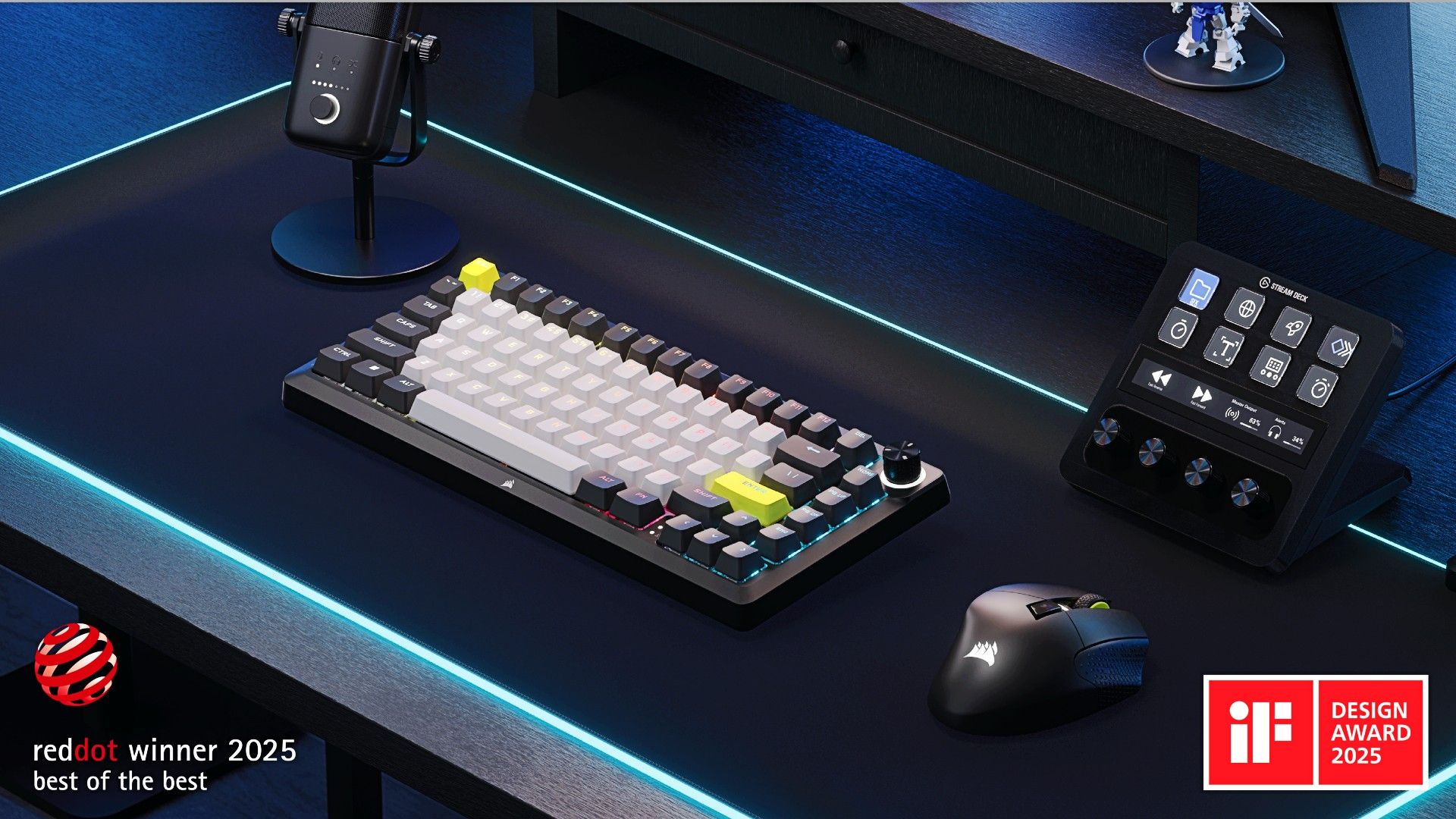
Related
Corsair’s New DIY Keyboard Kit Is Customizable and Web-Controlled
This Corsair Kit will let you make a cool looking keyboard even without much experience.
The benefits of these kits are that you get everything you need to build the keyboard. You can skip the headaches to get right to the fun part of assembling your new custom keyboard. I believe that these keyboards still count as custom keyboards and aren’t inferior in any way to completely custom builds; they’re different from taking a pre-assembled keyboard and dropping in custom switches, keycaps, and modifications.
Why Are Custom Keyboards So Expensive to Build?
Assembling different keyboard parts into a single unit typically costs the most, especially if you’re sourcing items from different manufacturers and sites. Shipping costs alone can easily add up to the price of a cheap mechanical keyboard.
Barebones kits are much more beginner-friendly and accessible, but they tend to be on the more expensive side as well. For instance, the Keychron Q5 barebones keyboard with a knob costs $185 (currently on sale for $129.99), whereas a fully assembled Q5 is only $20 more expensive at $205 (on sale for $149.99). You’re getting a set of switches, keycaps, and the labor involved in assembling the keyboard for only $20.
Another way to look at it is that, if you were using this keyboard for a custom build, you’re skipping the labor while also saving $20 that you can put forward into your switches and keycaps—And that’s where another large chunk of the expense of a custom keyboard lies.
On top of having to buy a barebones kit that costs as much as a very decent keyboard, you also have to invest in switches and keycaps. While you could buy inexpensive switches like the Outemu Red Switches, which are decent switches that cost around 26 cents per switch, building a custom keyboard means you’re more likely to opt for higher-quality components.
The switches are the most important part of a mechanical keyboard, so realistically, you should spend at least 50 cents apiece when you’re already this deep into a build. Personally, I wouldn’t go cheaper than something like the Gateron Oil King V2 switches, which are priced at $0.67 per switch. At the premium end, some of the most expensive switches I found are the Zeal Pearlio, currently selling for $11.20 for a pack of 10—a steep $1.12 each!
Keycaps are another part where the sunk cost fallacy often kicks in. You’ve already spent $130 for the kit and $60 on the switches, so you might as well spend another $60 on the only part that you actually touch when you type.
While affordable sets like the Womier Double Shot PBT Keycaps offer impressive quality for the price, many keyboard enthusiasts prefer investing in more boutique sets, such as the Drop DSA Astrolokeys.
Admittedly, you’re not gaining much beyond a cooler aesthetic and improved craftsmanship (any PBT keycaps I’ve used feel great), but it’s hard to deny that these high-end keycaps look impressive.
Custom Keyboards Are Still Worth the Investment
While barebones kits can be pricey, you’re essentially investing in better parts instead of paying for pre-assembly. You get a precision-machined aluminum case for a premium feel, a high-quality PCB with VIA support and hot-swappable sockets that can last through thousands of switch changes, pre-lubed stabilizers that are “tuned” (straight) out of the box, and a case designed with sound dampening in mind.
The money you invest in high-end switches and keycaps pays off, especially when it comes to feel and aesthetics. Premium keycaps made from higher-quality materials and with unique artisanal designs enhance both the look and feel of your keyboard. Meanwhile, well-lubed switches with housings and stems made from materials like nylon, POM, and, most recently, POK can deliver all the satisfying “thock” you’re after.
In fact, some people like to turn this hobby into a profitable venture by assembling fully custom keyboards and selling them on sites like Facebook Marketplace, Etsy, and eBay. Even if you don’t plan on selling your newly-assembled keyboard, it’s probably going to retain most of its resale value, so you can always sell it at a small loss so that you can reinvest the money into yet another custom build.
More Affordable Alternatives to Fully Custom Keyboards
Building a fully custom keyboard is a very expensive endeavor, and it can be especially difficult to finance if you’re buying everything at once. Heck, you might not even know what you expect from a keyboard and what kind of switches you want until you try a few different ones.
Fortunately, there’s a different and much cheaper way to build a semi-custom keyboard—I build my own keyboards by using pre-built models with hot-swappable switches. Right now, I own two such cheap keyboards, the Ajazz AK820 Pro and non-Pro versions, which together cost me less than $100 on Temu.
I ordered them with two different types of switches (linears and tactiles) and used them for several months. I bought several sets of cheap keycaps and switches, and each time I’d swap them, the sound and feel of the keyboards would transform completely. My current setup is the best one yet—I’ve grown quite fond of Akko switches and use the Akko V3 Creamy Purple Pro and Akko Dracula switches, which are fantastic value.
My Temu PBT keycaps cost only $12 per set, so I’ve spent about $35 per keyboard in total, and the investment has been well worth it. While these setups aren’t technically “custom” keyboards, the experience comes pretty close. Plus, I still have the original keycaps and switches, which I can use in a future build or sell to recoup some of the cost.
Mechanical keyboards are an expensive hobby, but I still think that custom keyboards are worth pursuing. Once you’ve learned what kind of features, sound, and feel you expect from your keyboard, you can build a one-off keyboard that’s unique to your desk and completely tailored to your preferences, both in functions and aesthetics.
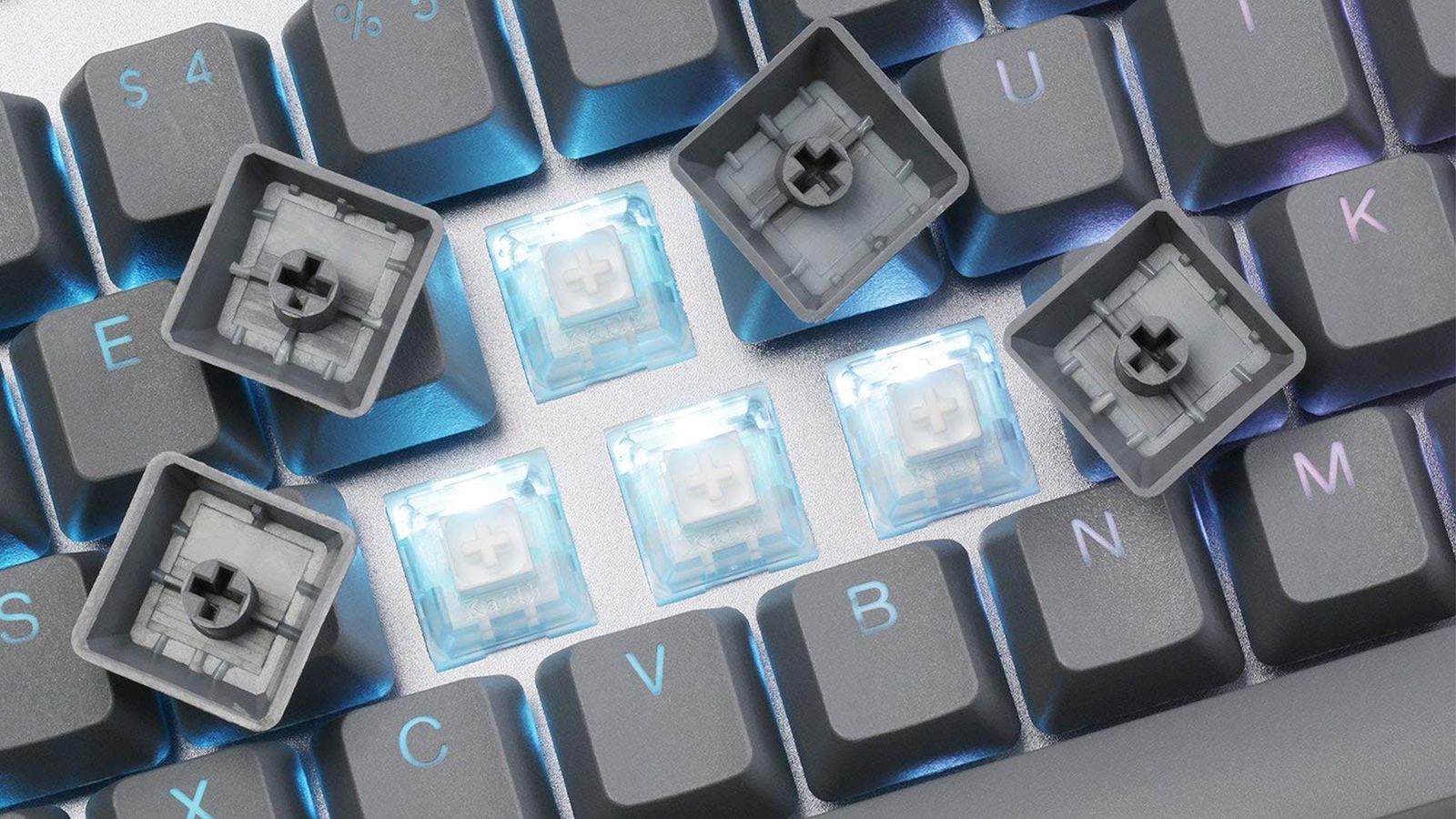
Related
The 8 Best Hot Swappable Mechanical Keyboards
Hot-swapping lets you finally get a taste of custom mechanical keyboards without completely diving in.

